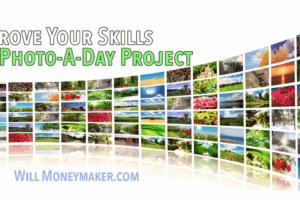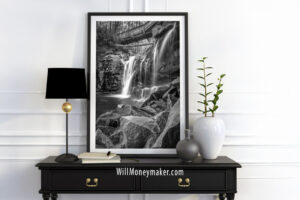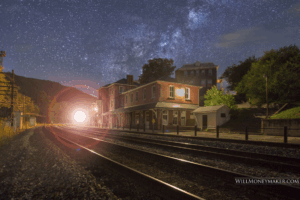There is a tendency to think of photography as an art medium that has strict limits. After all, you can only capture what the lens sees, right? But nothing could be further from the truth! Perhaps at one time, photography was more limited than it is now, but today, there are so many options, so many tools at our disposal that we really, truly can create anything that we can imagine.
Just think of all the gear available these days. Tilt-shift lenses give us a unique, almost miniaturized take on the world, and macro lenses let us explore things so small that we can’t see them with the naked eye. Telephoto lenses give us a chance to zoom in on what is far away, and special effects filters can be used to give us a variety of interesting effects before we’ve even started on the post processing. And then there is Photoshop along with other editing tools, which gives us access to everything from unusual crop ratios to the ability to manipulate and layer images in all kinds of fantastical ways.
So with all of these unusual things we can do, I thought it might be nice to explore a few interesting ideas. If you’re looking for inspiration or a change of pace from your usual photography, try some of the following out!
Light Painting
Of course, painting with light is what we photographers do by default. The camera takes light in, and an exposure is created. But when I refer to “light painting,” what I really mean is painting our exposures with external lighting—like a flashlight, for instance. At night, with long exposures, we can create all sorts of interesting images. You’ve surely seen nighttime imagery featuring long red and white streaks made by the motion blur of the headlights and taillights of passing cars. Light painting works the same. Get out a flashlight, set your camera up to do a long exposure, and then have someone move a light around within the frame to create a “painting.” You can even use different colored lights for even more unusual effects.
Another fun trick is to create light paintings will steel wool. The concept behind this one is simple: Simply attach the steel wool to a string or a chain so that you can spin it in front of the camera. People often use metal whisks attached to a cord, and then insert the steel wool into the whisk. Then, with a barbecue lighter, you can light the steel wool and spin it in front of the camera. Not only will you get the streaks of light from the burning steel wool, but you’ll also have beautiful trails left from the sparks that fly away from the wool. This is one technique that can be a bit risky, though, so make sure that you do this outdoors, when the landscape isn’t too dry, and it’s wise to wear protective clothing and pack a fire extinguisher along, too.
Multiple Exposures
Multiple exposures seem like one of those things that many photographers don’t do anymore, but they can be quite a lot of fun, and for a variety of different reasons.
Especially now, in the digital era, we’re no longer limited by film, which means no carefully unwinding and rewinding rolls in order to expose the same frame more than once. Now, multiple exposures can be done all in Photoshop!
One interesting thing you can do with multiple exposures is silhouettes. Take a photograph of a person or an object, and then turn the subject into a silhouette over which you superimpose another scene, like a landscape or a cloudy sky.
Multiple exposures can also be used to create multiplicative images, which can have a truly fantastical effect. If, for instance, you want multiple iterations of the same woman in the same photograph, but all in different poses, then with this technique, you can take photographs of the woman in each of the poses and then layer them all together in Photoshop. It’s a surprisingly simple effect, but one that can produce dramatic images.
Unusual Crops
We tend to think of photography in terms of the rectangle—or sometimes a square crop, but more commonly, we use aspect ratios like 5×7 or 8×10 to make photographs rectangular. And I suppose one reason for that is because that’s just the way mats and picture frames are designed, at least, if you’re buying off-the-shelf mats and frames. But just because these sizes and shapes are the standard, that doesn’t mean we have to follow that standard. Have you ever considered creating a circular photograph? An oval or a triangle? Custom matting and framing means that all of these shapes and sizes are possible—along with potentially new and unique compositions to match them. And, even if you don’t want to go through with custom mats and frames to match unusual shapes and sizes, you can always use these crop shapes as part of composite images. For instance, two triangles together to make a square or rectangle.
Gear Tricks
When it comes to things you can do with gear, the possibilities seriously expand. This is the realm of lenses—like tilt-shift, macro lenses, and so forth—as well as lighting and other tools. If you’re looking for something new to do, why not rent an exotic lens for a weekend? Things like tilt-shift and fish-eye lenses, in particular, are interesting to play with, but for many of us, not financially practical because their uses are more limited. But with lens rentals, if you feel like you need a creative boost, it’s easy to rent one of these lenses for a couple of days just to play around with it!
And, there are all kinds of other little bits of gear to play with. Reflectors are inexpensive, and photographers can set up some surprisingly complex and unusual lighting rigs with a few flash guns and colored filters. Things like Lensbaby lenses give you inexpensive ways to achieve all kinds of creative effects. Of course, this is just a small sampling of ideas to try out. The important point to remember is that photography truly is unlimited, especially nowadays with modern equipment and tools like Photoshop. So keep in mind that if you can imagine it, there is almost certainly a way to create it!
Now go and enjoy the beauty of God’s creation through your lens.




